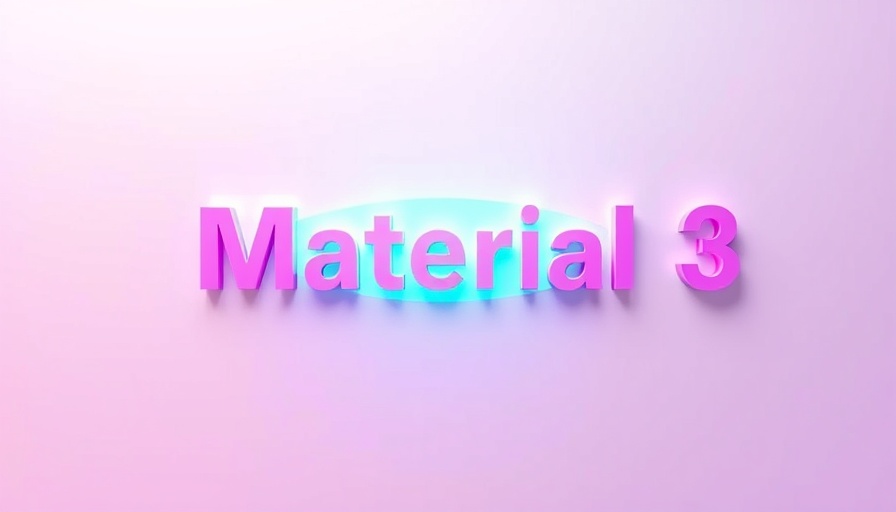
Google's Material 3 Expressive: A Game Changer for Android Design
In a surprising turn of events, Google has accidentally revealed details about its forthcoming Android design language—dubbed Material 3 Expressive—just ahead of its Google I/O conference. This update promises to enhance user experience by focusing on emotional connectivity through design elements, a stride towards making interfaces not just utilitarian, but also expressive.
The Evolution of Material Design
Since its inception in 2014, Google's Material Design has served as a cornerstone for developing user interfaces across Android applications. The transition from Material Design to Material You in 2021 showcased personalization capabilities by allowing elements like color schemes to sync based on users' wallpaper choices. With Material 3 Expressive, Google appears to be taking these principles further, aiming to create a more empathetic design approach.
The new language is set to maintain the aesthetic foundations laid by its predecessors while injecting more vibrancy through bold shapes and colors—features highlighted in the leaked blog post. By emphasizing emotional reactions, Google hopes to draw in users of all ages and enhance usability for older adults, reinforcing their commitment to inclusivity.
Benefits of Expressive Design in Technology
What does this shift towards expressive design mean for developers and users? For developers, adapting applications to fit this new paradigm could yield better user engagement and satisfaction rates. Research backing the principles behind this design model indicates that when users can connect with the interface on an emotional level, they are more likely to enjoy their experiences and use the apps with greater frequency.
Connecting with an Ever-Evolving User Base
As technology progresses, the way users interact with their devices evolves too. Younger generations are becoming increasingly visual and demanding more from their digital interactions—this is where a systems upgrade like Material 3 Expressive comes into play. Enhancements in designs that prioritize color, shape, and overall aesthetics seek to align with a more youthful customer base that appreciates modern and approachable interfaces.
Your Role as Users and Developers
This is a pivotal moment for both users and developers in the Android ecosystem. As developers, embracing the spirit of Material 3 Expressive means respecting existing design patterns while also attempting to integrate new elements that grab attention and improve usability. Meanwhile, users should be aware of how these updates may transform their everyday interactions with technology, offering long-term benefits that enhance productivity and enjoyment.
Wrapping Up: What Lies Ahead?
In summary, Google's Material 3 Expressive represents more than just an aesthetic update; it is a thoughtful enhancement aimed at creating design systems that resonate with users. As the technology landscape continues to evolve, so too must the approaches taken to engage users meaningfully. The unveiling at Google I/O promises to offer deeper insight into how this initiative will be rolled out.
Stay tuned for more updates about this exciting development in technology news, as Google continues to redefine user engagement through design.
 Add Row
Add Row  Add
Add 



Write A Comment